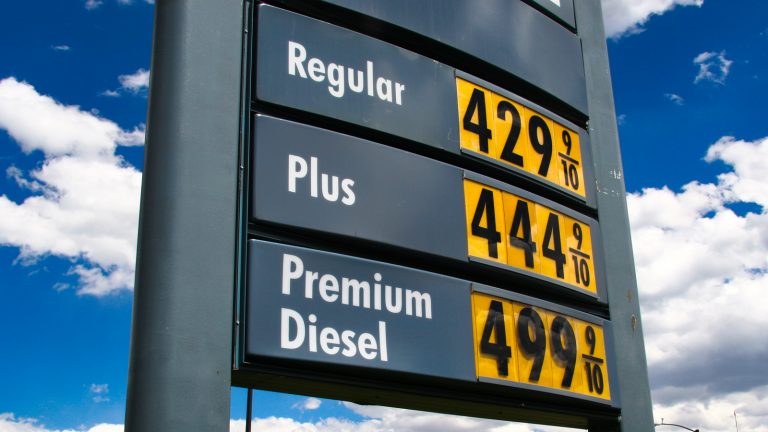If you’re wondering what drives gas prices, and easy answer is that gas prices are driven by supply and demand. However, it’s more complicated than that.
It takes oil months to go from the wellhead to your gas tank. During that time, it’s transported, refined and transported again. Each player in this dance is seeking maximum profit. They’re only constrained by their own needs for revenue and the cost of holding inventory. No one has found a better way to ration scarcity than price.
Storage Matters
The keys to today’s gas prices can be found in this chart and this spreadsheet, from the Energy Information Administration.
The chart shows the amount of crude oil in storage around the U.S., and how long that supply can last under current demand. Since late last year, storage has been below what it had been over the previous five years. The amount of crude in storage usually peaks as the “summer driving season” approaches, falling into the winter before rising again.
This year, it didn’t rise again. On June 10, storage represented 25.8 days of supply, according to the EIA. A year ago, it was at 27.26 days. While U.S. oil production is up — to nearly 12 million barrels per day from 11 million a year ago — producers can hold out for their best price.
The Refining Conundrum
The U.S. is a major oil refiner, but refining hasn’t been a great business for decades.
Gasoline, kerosene and heating oil have different densities. Refining means heating oil to separate its components. This is complicated and dirty.
Half of America’s refining capacity has disappeared in the last four decades. Profits fell to just $1-$2 per barrel during the pandemic. The last new U.S. refinery came online in 1977. It can take a decade to build a refinery, and with the death of the oilpatch now in sight no one wants to make the investment.
When refiners are shut, for maintenance, upgrading or to meet government pollution standards, capacity disappears. Remaining refiners squeeze the market for profits. That’s what they’re doing right now, with refining profits rising to $18 per barrel. Biden Administration calls to rein in “obscene profits” may get no better results than the Trump Administration’s support for the sector in the last decade did.
No one wants to spend 30-year money on something that will go bust in 10.
Saudi Market Control
Between falling storage and refining shortages, the supply of finished product available to the U.S. market is falling behind demand. The amount of finished gasoline available to send to your local station has
fallen by nearly 90% since 1990.
Control over the refining business is moving to the Middle East. Profits in what’s called the “downstream” business are soaring. This is why Saudi Aramco, which spun out from full state control in 2019, is now worth almost four times Apple (NASDAQ:AAPL).
The Saudis’ control of the industry may not last, but it’s real.
The Bottom Line
The tools to change the supply-and-demand equation for oil are in your hands. The trouble is they will take years to deploy.
Removing Russian oil from the market is giving Saudi Arabia and other oil states enormous power. They’re still investing in downstream businesses Americans are abandoning, based on long-term trends.
Renewable energy is now cheaper than oil. It’s becoming cheaper than natural gas or coal. But this wasn’t true until recently. The infrastructure needed to get this energy to market has yet to scale. While it scales, the best answer for consumers is conservation.
Conservation is not a message the market wants to hear. But until the fuel of the sun and wind are fully exploited, gas prices will remain high, and burning oil for energy will remain highly profitable.
On the date of publication, Dana Blankenhorn held a long position in AAPL. The opinions expressed in this article are those of the writer, subject to the InvestorPlace.com Publishing Guidelines.

